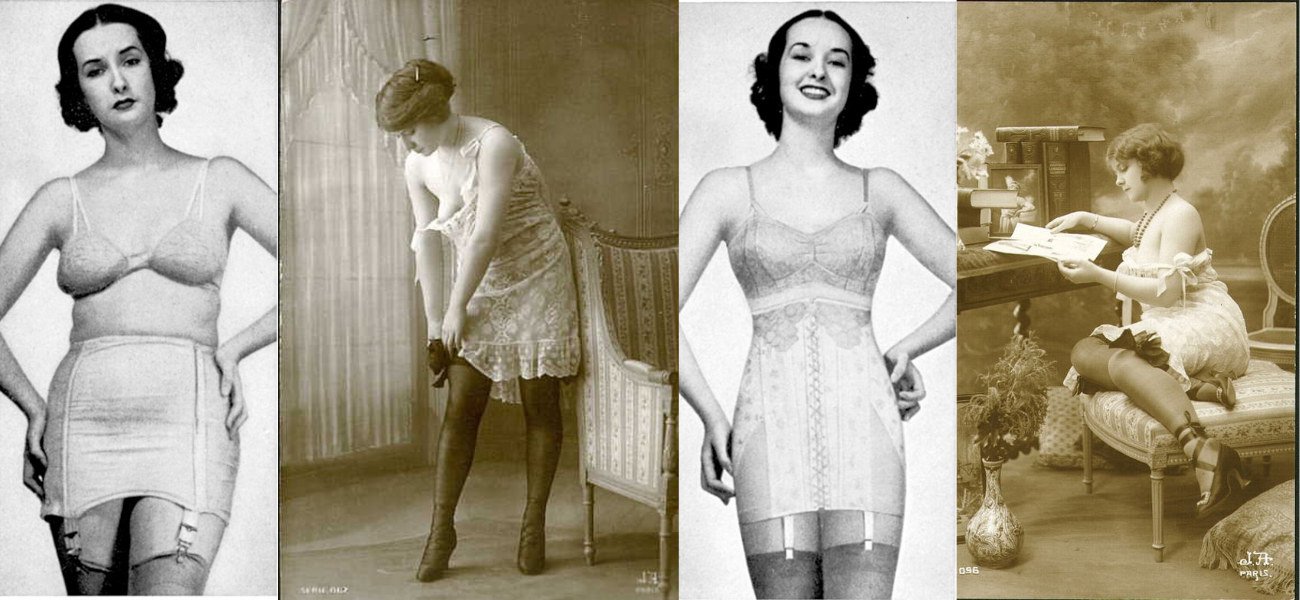- May 23, 2025

The Early 20th Century: The Invention of the Bra and a New Era of Women's Freedom
In 1913, Mary Phelps Jacob created the first bra to escape the corset’s grip — and unknowingly sparked a revolution. This story explores how lingerie shifted from control to comfort, marking a new era of women’s independence.
Until the early 20th century, the corset was almost the only option for women’s underwear in Europe and America. In addition to shaping the body and enforcing posture, it also constrained the body, making breathing difficult, limiting mobility and compressing organs. But with the development of medicine, the changing social role of women, and the influence of feminist ideas, things began to shift:
- Physicians have openly discussed the dangers of everyday corset usage.
- In addition to stitching in the parlor, young ladies were increasingly riding bicycles, dancing, and studying.
- There was a demand for underwear that supported the body organically and softly rather than “disciplining” it.
Amid this shift, a historic moment occurred — the birth of the bra.
An Improvisation That Changed Everything: Mary Phelps Jacob
Mary Phelps Jacob, a 19-year-old New Yorker, was getting ready for another glamorous ball in 1913.
A stylish off-the-shoulder dress composed of airy chiffon fabric was her choice.
But the problem was… the corset, which: damaged the neckline, made breathing difficult, and protruded beneath the delicate cloth.
Mary chose to act in order to save the dress and the evening. She called her maid, grabbed two silk handkerchiefs, some ribbon, and a needle with thread.
They worked together to sew what would eventually be the first bra prototype:
- The cups were made out of two handkerchiefs.
- Ribbons were knotted around the body and draped over the shoulders.
- Light and flexible, all without pressure or boning.
The First Night in the New Garment — and a Wave of Interest
Mary looked perfect when she wore her “invention” underneath the dress.
Everyone could see how easily and beautifully she moved, yet nobody could see exactly what she was wearing.
Women at the ball noticed right away: “What are you wearing underneath your dress? How does your neckline seem so flawless and smooth?
After Mary gave an explanation, her friends asked her to sew the same item for them the next day.
Thus, a small revolution began — with a needle, a ribbon, and the refusal to endure discomfort.
The Patent and the Forgotten Business
Mary submitted a patent application and obtained legal papers for the “Backless Brassiere” in 1914. In the US, it was the first bra to be formally registered. But she had no desire to become a businesswoman.
The Warner Brothers Corset Company eventually purchased the patent from Mary for $1,500. The business improved the design, introduced it to the market, and over the next 30 years, made over $15 million from it.
Though Mary never built a business, she became a symbol. A symbol of women’s freedom.
World War I: Practicality Above All
Since steel was required for wartime manufacturing, the US government launched a push to stop using metal corsets after World War I.
This gave another strong push to the popularization of bras:
- Lightweight fabrics were used for their sewing.
- needed no metal,
- permitted women to participate in the military effort, employment, and travel.
Lingerie for women evolved to become a useful tool for the times.

What Did the First Bras Look Like?
- No cups — just two soft fabric panels.
- Ribbons are used instead of clasps.
- occasionally had a second waist strap for further support.
- sewn in little workshops or by hand.
However, the A, B, C, and D cup size system was previously created by Maidenform in the 1930s, which improved the comfort and customization of bras.
Fashion’s Influence: A New Body — A New Lingerie
Androgyny was embraced by fashion in the 1920s, the time of the flapper females.
Bralettes were well-liked because:
- They were not ardent supporters of the bust,
- produced a silhouette that was “flat,”
- permitted freedom of movement and fashion.
In the 1930s–40s, curves came back into fashion — and with them appeared:
- bras with cup shapes,
- clasps on the back,
- thin straps,
- the first “Push-up” fashions.
The bra had evolved into a fashion icon by the 1950s, thanks to glossy photos, pin-up culture, and conical cups.

1920s undergarments: 2 silk and chantilly lace slips and 1 pair of silk underwear, all by Madame Watrigant in Brussels. A silk ribbon suspender belt by Luxia in France. All items c.1920-1930, courtesy of the Rijksmuseum.
The bra is not just a garment. It’s a statement
Mary was unaware that she was altering history when she took up the needle. However, her behavior signaled the beginning of a period in which women’s dress became increasingly reliant on comfort and freedom.
Today, the bra is a choice. It’s an instrument that shapes, but never forces.
Most importantly, it serves as a remembrance of the lady who fashioned herself comfy lingerie after declaring, “I deserve more,” at the appropriate time.
The second half of the 20th century, when lingerie became seductive, free, and no longer concealed, will be covered in the following section.
With love — Your Moonlit team
